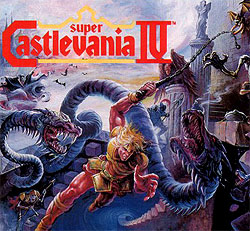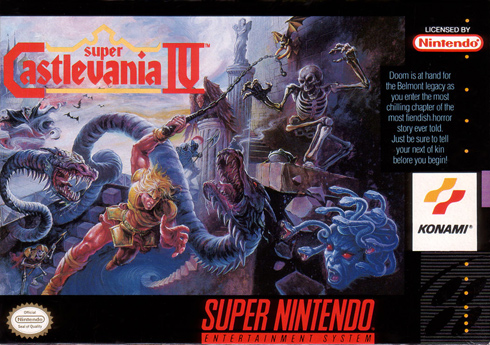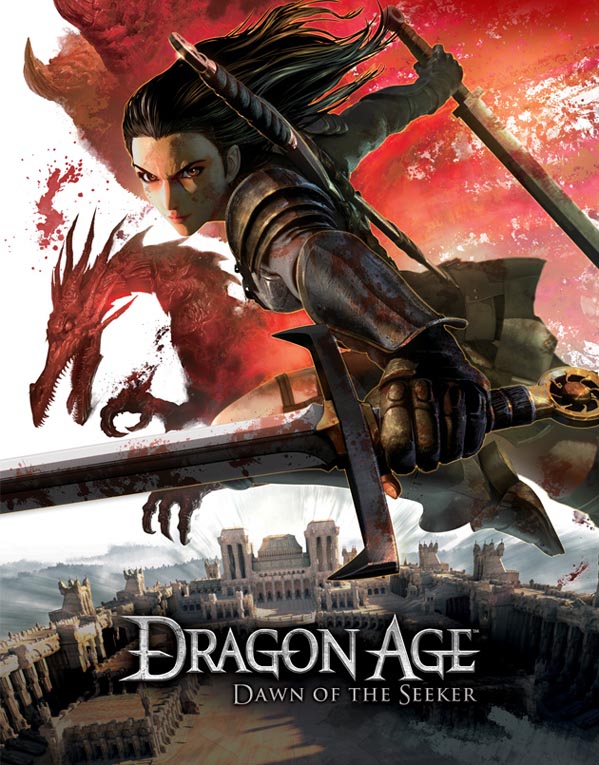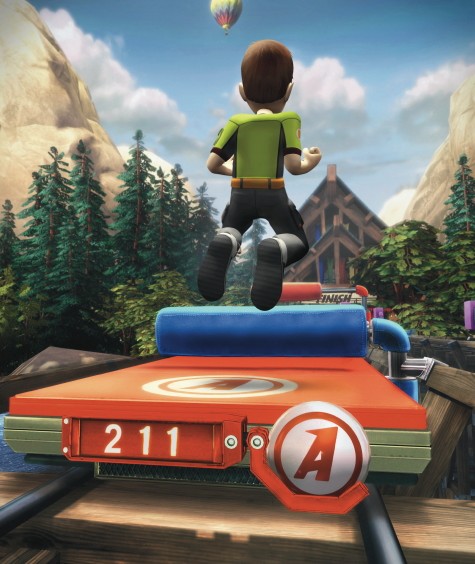
Retro-review: Super Castlevania IV
 Next gen graphics and massive weapons are no match for a good whip at your side, kid.
Next gen graphics and massive weapons are no match for a good whip at your side, kid.
Buying Super Castlevania IV from the virtual console should have been the second thing you did with the Wii. The first, of course, was figuring out how to cheat the system at Wii Sports bowling. The game first hit store shelves in December 1991, and 19 years later, it still offers excellent platforming and one of the best soundtracks in gaming.
Story: The game follows the classic line of Simon Belmont, set out into the castle to battle Dracula. No distant relatives or shape shifting characters here, just classic whip on vampire action. Overall, it is very similar in execution to the original Castlevania, with some very notable improvements.
Gameplay: Like most games of this era character movement wasn’t intended to be realistic, rather a part of the challenge. Just like Megaman, Simon Belmont had limited jumping ability, and could not readily change direction in mid-air. Probably one of the harder aspects of this game is trying to get Simon positioned correctly just to walk up the stairs (not a joke), which required some strange combination of moving and pressing up on the d-pad at the same time. This was also true of jumping into the middle of a stair section — you want to hit the staircase running upwards, otherwise you’d drop through into the bowels of the castle. The mechanic is so strange that you were able to hit staircases backwards and moonwalk up them. Probably not intended but nonetheless classic.
Simon makes up for his mobility issues with some much needed whip ability. SCIV marks the first game in which Simon can attack in eight directions. He can also hold the whip out in front of him and spin it around; this is move is sort of useless since the damage is minimal, but can hold of weaker enemies in a pinch. Simon’s whip has three upgrade levels, and can also use the whip to swing from grapple points throughout the game. Like previous games, Simon can also acquire secondary weapons (holy water, boomerang cross, axe) which can be further upgraded in the form of simultaneous (2x, 3x) activations.
Pro tip: Boomerang Cross with 3x throw will exploit most boss fights, including the final confrontation with Dracula (not a spoiler).
Visuals: Mode 7 ruled Super Nintendo games and SCIV is no exception. Mode 7 is what allowed for 2D graphics to be scaled and rotated on the screen, thus creating a 3D effect. This is how games like Mario Kart, and F-Zero could create “depth” with the technology of the day. It is used extensively in SCIV, but not in a hey-look-what-we-can-do way. In one level the background spins like the a fun-house room, while you’re trying to jump from platform to platform. In another level the room rotates entirely, forcing you to latch onto grapple points to stay alive. In yet another level, Mode 7 is used to make a boss grow larger as you attack him. Overall, the execution of the visual style is amazing, each level has its own personality, each boss has its own style.
Music: This game still has one of the best start-to-finish soundtracks to date. It ranks right up there with Megaman 2. Castlevania has one of those soundtracks that video game cover bands play — classically inspired with metal overtones and prog-rock melodies. The music sets a different mood for each level, even the transition between levels, as well as a non-annoying tune for Simon’s demise (and there will be many). Music also makes just as much of an impact when it is absent, the intro level to the game does a great job of opening with a relatively quiet score.
(Props: video direction and nes power-pad. Not-Props: Manuhunt 2 t-shirt)
Nostalgia: Don’t worry about saving your game, jump into any level by inputting a symbol-based code into a 4×4 grid of squares. This game also features classic hidden power ups and cheats. Normal walls can often be broken apart to reveal health (in the form of meat, where does he find the time to eat?) and item power-ups. There’s even a super-secret hidden platform at the end of the final level that makes the final boss beatable if you die on your way up the tower. If memory serves me correctly, there’s even a sfx and music player in the options menu! Don’t forget about the box art too… classy!
With all the focus on modern games, and their big budget blockbusters, it’s easy to overlook the classics. Take a break from microtransactions, facebook connectivity, and online multiplayer with racist 15-year-olds, and kick back with one of the real classics of the 16-bit era. The platforming can be frustrating at times, even the weakest of enemies can stop you mid-jump and send you into furious rampage. It’s all a part of the experience, just go with it.
This Post Has 2 Comments
Comments are closed.





I can’t stop watching this video. I have a problem.
I loved this review. Don’t let the man get you down.